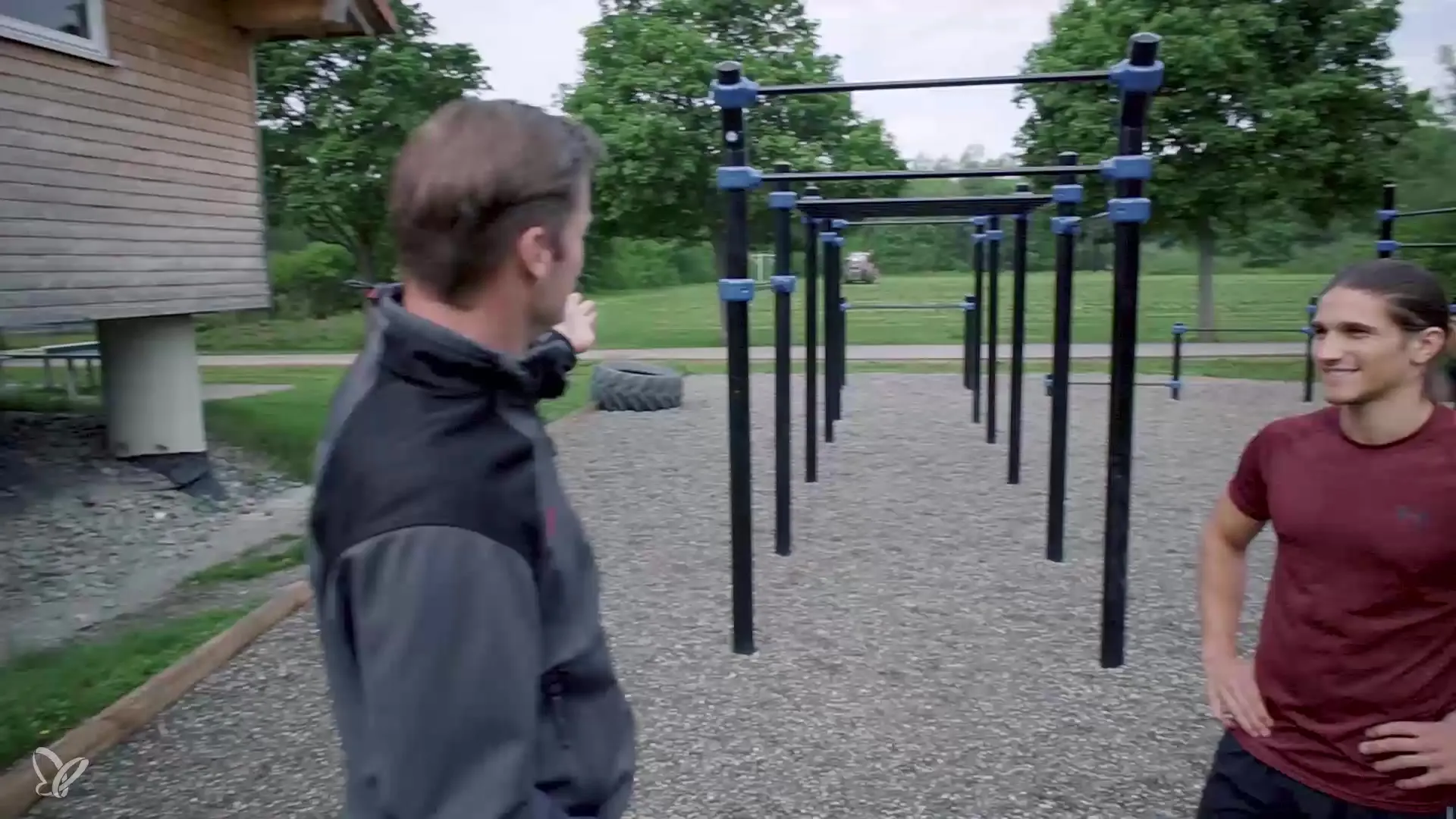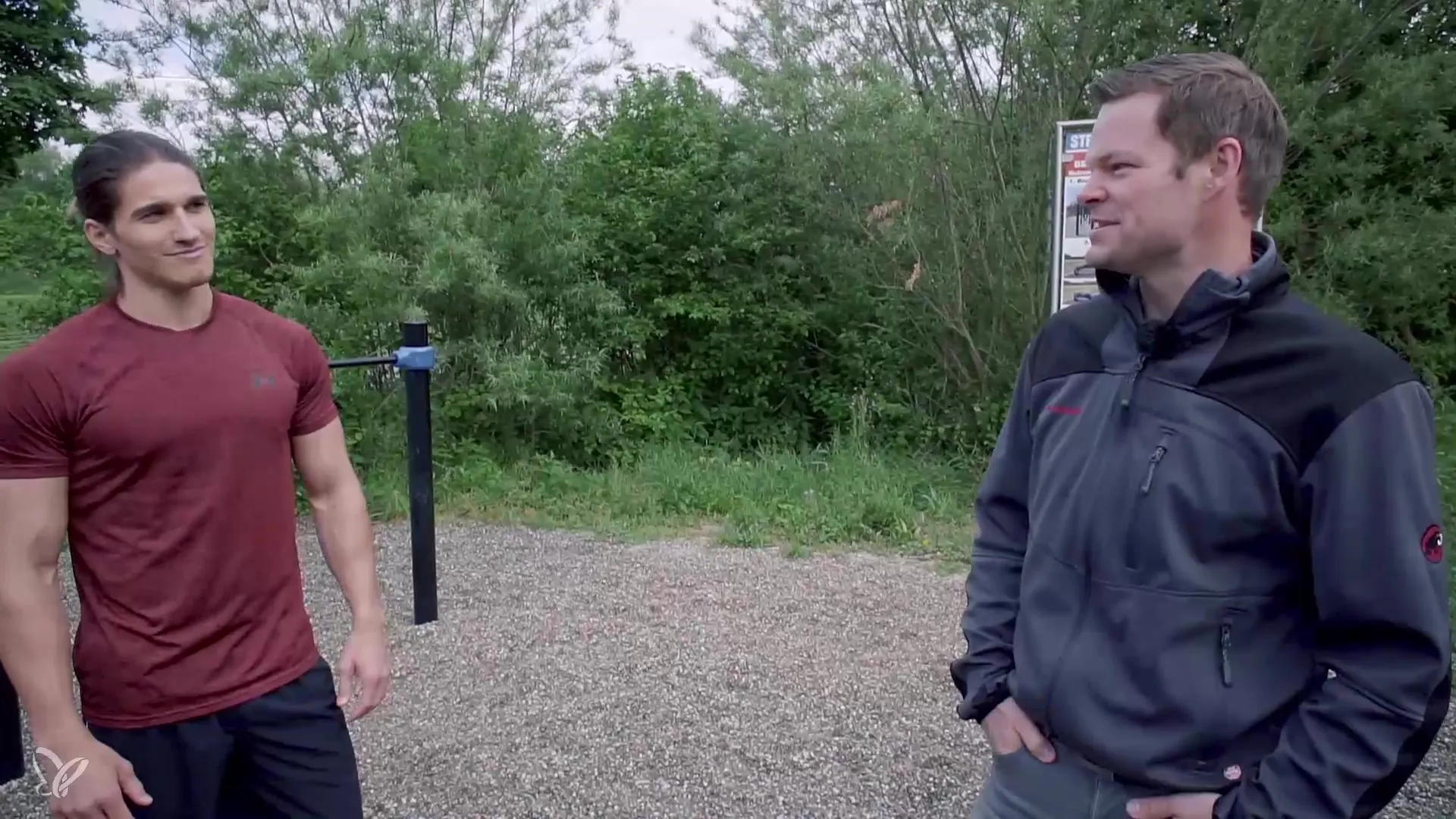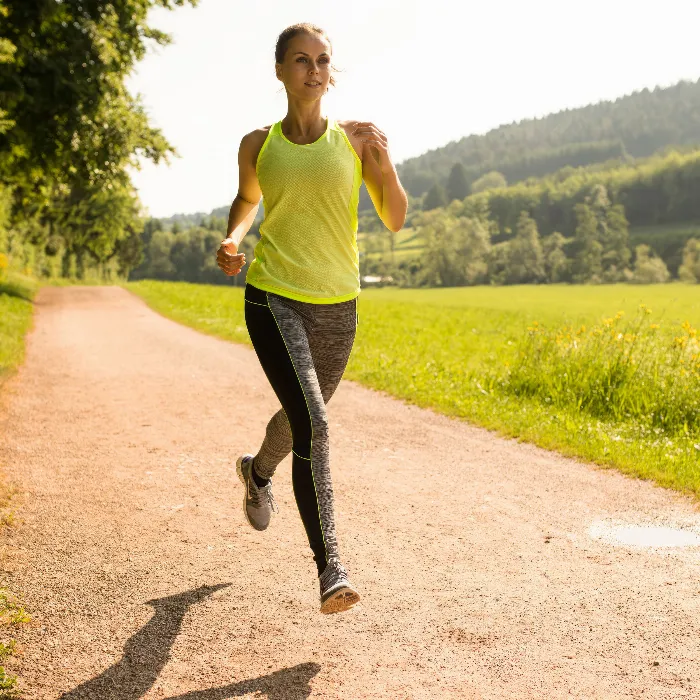When it comes to sports photography, choosing the right location is crucial for image quality and the impact of the shots. In this tutorial, you will see how I use a fitness park for a shoot and what important aspects are involved in the location check and model selection. Let’s dive into the details together!
Key Insights
- The choice of a suitable location affects the composition and quality of the images.
- Disruptive elements in the surroundings should be identified and avoided.
- A good model should be fit and ready to execute various poses and exercises.
- It’s important to communicate with the model to select appropriate exercises.
Step-by-step Guide
Selection of the Location
The locations for sports photography need to be well thought out. In this case, I chose a street workout park, which is small but versatile. However, it is located on a busy street, meaning I have to expect noise. This noise background might be irrelevant for the creative work, but it should always be kept in mind. Of course, there is also room for improvement when it comes to unwanted image elements like a power pole rising above the park. Before I start shooting, I scan the environment for potential disruptive factors.

Introduction of the Model
Elias is our model for today's shoot. It’s important to select an athlete with a solid fitness level, who is ready to perform various exercises. I chose Elias not only because he is fit, but also because he has a patient and strong-willed personality. While we warm up, he will also show me which exercises he likes to do. This communication is crucial, as it doesn’t help if the exercises you want to photograph are beyond his capabilities.
Exploring the Exercise Areas
When staging sports photography, it is important to thoroughly explore the park to find out which shots are possible. I will move with Elias from one area to another and look for suitable locations for the exercises. You should always be open to new ideas that might arise from the surroundings. We also discuss the exercises we have planned. Elias shows me his possibilities, and I take notes on which poses he can implement.

Considering Lighting Conditions
The lighting conditions are also a critical factor for sports photography. I keep track of the sun's position and wait for the sun to be optimal to achieve the best lighting conditions for our photos. During this time, I take the opportunity to prepare my equipment. It’s important that you are aware of the lighting conditions, as they can make the difference between a good and a great image.
Technical Preparation
While I wait for the best lighting conditions, I prepare my equipment. I check the camera and the lenses and ensure that everything is ready to start shooting after the warm-up. The better prepared you are, the easier the entire process will be. I always recommend having a Plan B – whether it’s an alternative location or other settings you could try in case the light isn’t optimal.

Summary - Staged Sports Photography: Location Check and Model Introduction
In staged sports photography, the choice of the right location and the selection of a suitable model are crucial for the success of your shots. Keep an eye on disruptive factors and communicate openly with your model to achieve the best results. Plan ahead and always be ready to react to the circumstances.
Frequently Asked Questions
How do I choose the best location for sports photography?Consider lighting conditions, noise sources, and disruptive elements in the surroundings.
Why is communication with the model important?Communication helps to find suitable exercises and poses that are achievable.
What should I pay attention to during the shoot?Be mindful of the lighting conditions, prepare your equipment carefully, and be flexible in your shots.
How can I avoid disruptive elements in the image?Scan the surroundings before the shoot and choose perspectives that exclude disruptive elements.
How do I prepare for the shoot?Check the technique and make a plan for the shots, including possible alternatives.


